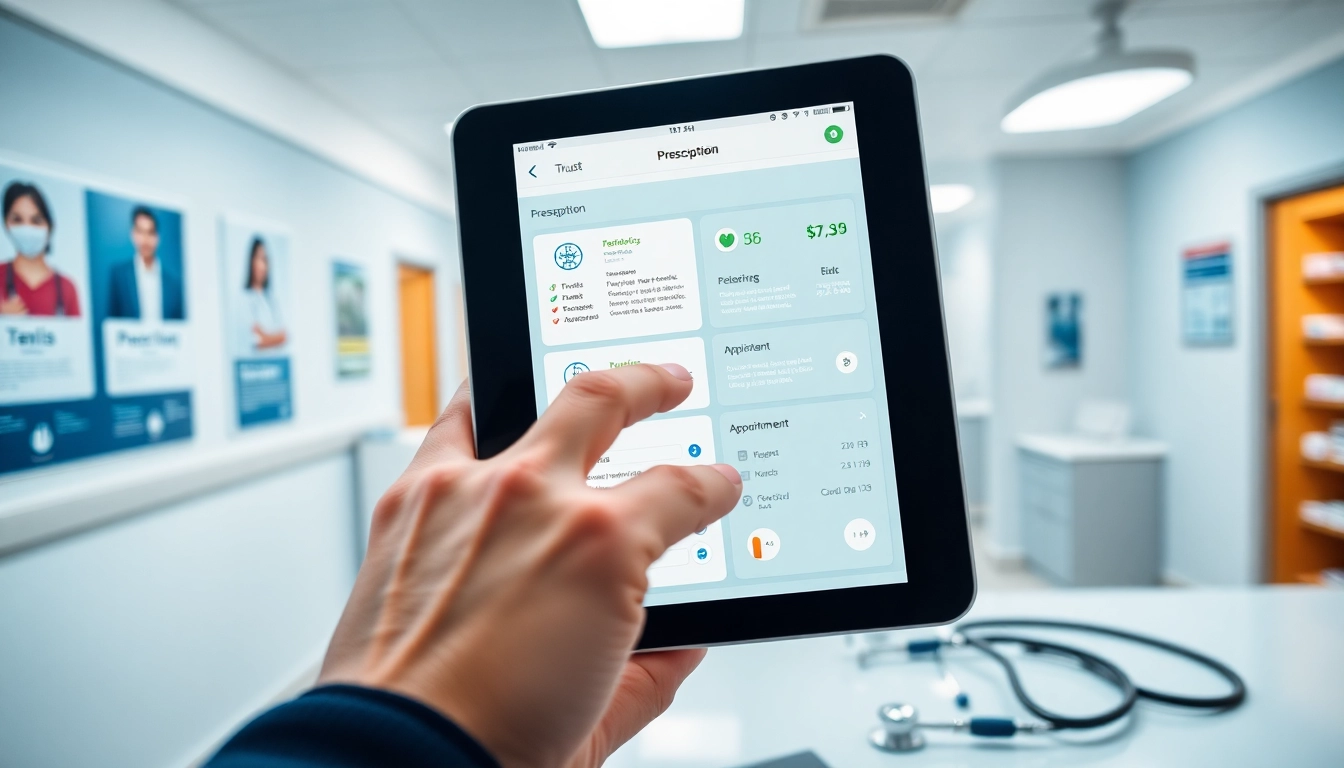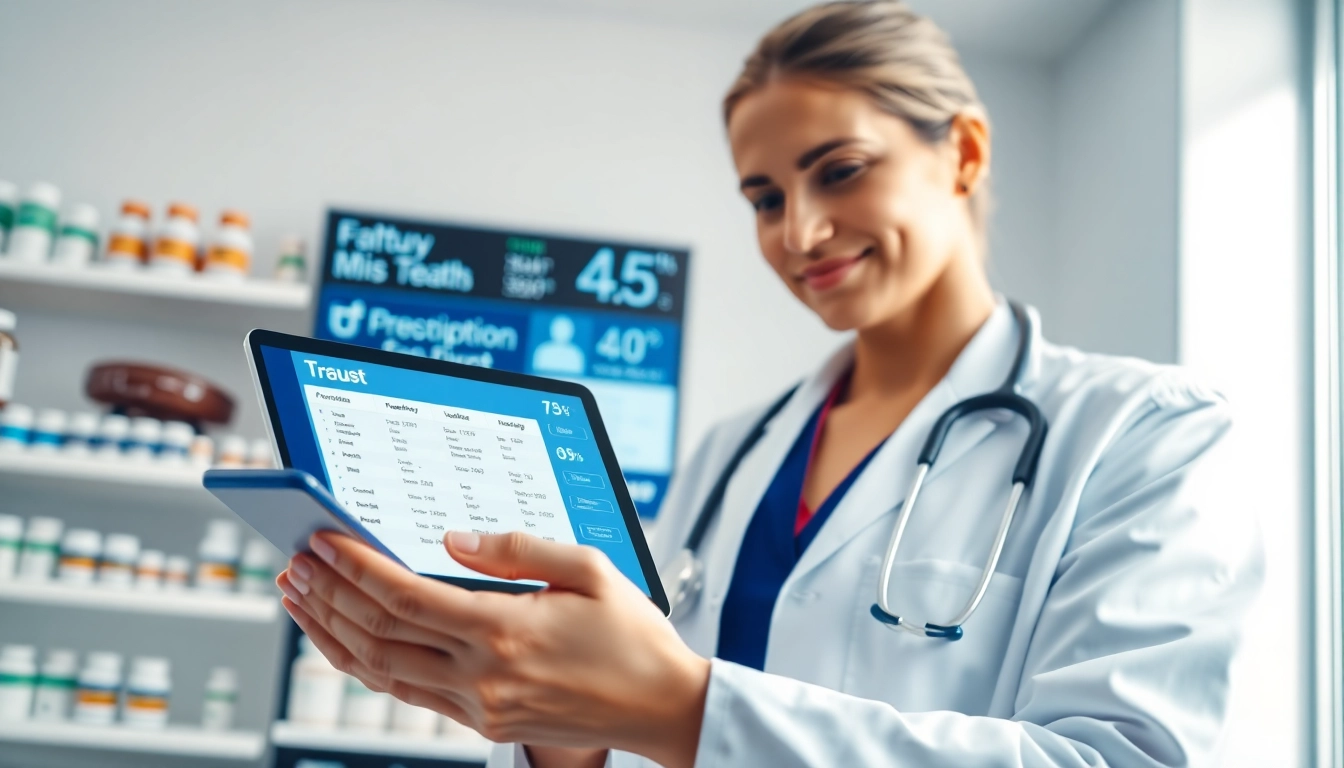Understanding the Importance of Top Rated Prescription Applications
In the modern healthcare landscape, technology plays a crucial role in advancing patient care and medication management. As patients increasingly seek convenient solutions for their healthcare needs, prescription applications have risen to prominence. These tools not only enhance accessibility but also offer various features that improve adherence to medication regimens and communication between patients and healthcare providers. By exploring the top rated prescription applications, users can discover solutions that best fit their unique medical requirements and lifestyle preferences.
1. Benefits of Using Prescription Applications
Prescription applications offer a multitude of benefits that can significantly impact patient health management. Here are some of the most notable advantages:
- Convenience: Accessing medications and tracking prescriptions from a smartphone provides unparalleled convenience for users. Patients can order refills, set reminders, and manage medication schedules directly from their devices.
- Improved Adherence: Many applications have features that send automated reminders, helping users to take their medications on time. This can lead to better health outcomes and reduced hospital visits.
- Health Tracking: Users can keep track of their health metrics within these apps, which can be shared with healthcare providers for more accurate treatment plans.
- Cost Savings: Some prescription apps provide price comparisons and discounts, allowing users to find the most affordable options for their medications.
- Secure Communication: Many applications enable secure messaging between patients and healthcare professionals, enhancing the overall communication process.
2. Common Features of Top Rated Prescription Applications
The most effective prescription applications often share several key features. Understanding these functionalities can guide users in selecting an appropriate app:
- Medication Reminders: Alerts and notifications ensure that users don’t miss their doses, which is crucial for maintaining effective treatment.
- Prescription Refill Management: Users can request refills through the app, streamlining the process and minimizing delays in medication availability.
- Drug Interaction Checker: This feature helps users identify potential adverse interactions between their prescribed medications, enhancing patient safety.
- Telehealth Integration: Many applications allow users to consult with healthcare providers virtually, making it easier to discuss medication concerns and receive advice.
- User-Friendly Interface: Top applications prioritize ease of navigation, ensuring that all users, regardless of their tech-savvy level, can make the most of the app’s features.
3. Challenges in Choosing the Right Application
While there are many advantages to using prescription applications, selecting the right one can also present challenges:
- Variety of Options: The sheer number of available applications can be overwhelming, making it difficult for users to determine which is best for their needs.
- Privacy Concerns: Users must consider the data privacy policies of each app to ensure their personal health information is kept secure.
- Compatibility with Healthcare Providers: Not all applications integrate seamlessly with healthcare systems, which can limit their effectiveness.
- Cost Factors: Some applications may charge fees for premium features, leading users to weigh the benefits against the costs.
- User Experience: Not all applications provide the same level of user experience; poor functionality can lead to user frustration and decreased engagement.
Key Players in the Market of Top Rated Prescription Applications
1. Overview of Popular Applications
The market for prescription applications has seen the emergence of several prominent platforms that offer unique features and capabilities. Each of these apps caters to different user needs:
- The Prescription App: Known for its user-friendly interface and comprehensive features, this app focuses on helping users track their medications and set reminders.
- Medication Helper: This application excels in providing detailed information about medications, including potential side effects and interactions.
- Refill Assistant: Users appreciate this app for its ease of use in reordering prescriptions, along with notifications that help ensure timely refills.
- Health Tracker: This app integrates medication management with health metrics tracking, allowing users to monitor their overall health in one platform.
- Telemed Connect: Specializing in telehealth, this application connects users with healthcare providers for real-time consultations.
2. Comparing Features and User Experiences
To effectively choose between leading prescription applications, users should compare their features and performance. Some differentiators to consider include:
- Customization: The ability to tailor app settings to individual preferences is vital. User experiences can vary widely based on how well an app serves diverse needs.
- Feedback Mechanisms: Users should look for applications that encourage and respond to user feedback, fostering ongoing improvement of the app.
- Support Services: Apps that offer robust customer support can significantly enhance user satisfaction and comfort level with the technology.
- Community Features: Some applications allow users to connect with others managing similar health conditions, providing social support and insights.
3. Awards and Recognitions in the Industry
Many top rated prescription applications have received industry awards, serving as a benchmark for quality and reliability:
- Best User Experience: Apps that excel in user interface and overall satisfaction often receive recognition from technology review organizations.
- Innovation Awards: Applications that introduce unique functionalities, such as AI-driven health insights, may be acknowledged for their forward-thinking solutions.
- Healthcare Impact Awards: These awards recognize applications that significantly improve patient health outcomes through effective medication management.
How to Choose the Best Top Rated Prescription Applications for Your Needs
1. Assessing User Needs and Preferences
Choosing the right prescription application begins with understanding individual needs. Users should consider:
- Health Conditions: Different health conditions may require tailored features; for instance, those managing chronic illnesses may need robust tracking capabilities.
- Technology Savvy: Comfort with technology can impact how effective an app is for a user; simpler interfaces may suit those less familiar with digital tools.
- Family Involvement: Users with family caregivers may look for apps that facilitate shared access and monitoring of medication schedules.
2. Evaluating App Reviews and Ratings
Thoroughly reviewing feedback from other users can provide critical insights into an application’s reliability:
- App Stores: User ratings and reviews on app stores often reflect real user experiences, highlighting both pros and cons.
- Healthcare Forums: Engaging in discussions on healthcare forums can uncover additional insights and recommendations from peers.
- Expert Reviews: Consulting expert reviews from healthcare professionals can lend valuable perspective on app usability and efficacy.
3. Trials and Subscription Models: What to Consider
Before committing to a prescription application, users may want to explore trial options:
- Free Trials: Many applications offer limited-time free trials, allowing users to evaluate features and user experience without financial commitment.
- Subscription Plans: Users should carefully review subscription models, ensuring that they pay for only the features they will use.
- Cancellation Policies: Understanding how to terminate a subscription will provide peace of mind while experimenting with different apps.
Best Practices for Utilizing Top Rated Prescription Applications Effectively
1. Integration with Healthcare Provider Services
To maximize the benefits of prescription applications, integration with healthcare provider services is essential:
- Share Information: Users should take advantage of features that allow them to share medication information with prescribers, ensuring cohesive care.
- Utilize Telehealth Features: Many applications offer telehealth consultations, bridging the gap between medication management and direct healthcare access.
2. Regularly Updating Medication Information
Maintaining accurate and up-to-date medication records is crucial:
- Add New Prescriptions Promptly: Users should input new prescriptions or changes in dosage as soon as they occur to prevent any confusion.
- Review Medications Periodically: Regularly checking and updating medication lists ensures ongoing relevance and accuracy in health tracking.
3. Utilizing Reminders and Alerts for Optimal Compliance
To promote adherence to prescribed regimens, leveraging reminder features is key:
- Set Personalized Reminders: Users should customize alerts that fit their schedules and lifestyle to ensure they take medications as directed.
- Encourage Family Participation: Family members can support adherence by participating in reminder setups and providing additional accountability.
Future Trends in Top Rated Prescription Applications
1. The Role of Telehealth in Prescription Management
As telehealth continues to evolve, so too will the functionality of prescription applications:
- Seamless Integration: Future applications may feature more comprehensive telehealth integration, allowing for more coordinated care experiences.
- Real-Time Monitoring: Enhanced capabilities for healthcare providers to monitor patient medication adherence in real-time may emerge, fostering proactive interventions.
2. Innovations in Medication Tracking Technologies
Emerging technologies are likely to reshape how medications are tracked and managed:
- AI and Machine Learning: Predictive analytics can help users anticipate refills and adjust dosages based on health data trends.
- Wearable Integration: Future applications might integrate with wearables, providing additional data to inform medication adherence and health outcomes.
3. User Privacy and Data Security Concerns
As the usage of prescription applications increases, so do concerns about data privacy:
- Enhanced Security Protocols: Future applications must continuously evolve to implement advanced security measures to protect personal health information.
- Regulatory Compliance: Ensuring compliance with health data regulations will be paramount as user awareness around privacy grows.




